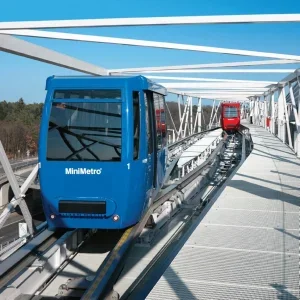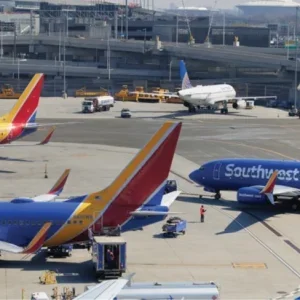The German economy is regarded by many as the engine of Europe, a manufacturing giant whose productivity is reflected in its lively skies: each day the nation’s heavens play host to the movements of 10,000 civil and military flights. Not everyone can experience this kind of German industrialism as closely as air traffic control (ATC).
Marshalling Europe’s busiest sky offers a tangible insight into a country at work. To the untrained eye, these skies are just a messy patchwork of criss-crossing vapour trails, but to ATC, these patterns are the product of rigorous and intricate work.
The majority of that effort is designed to make the sky as safe as possible. On a daily basis, this means defining clear flight paths, controlling the runway and complying with distance rules. But in the long term, managing and improving the safety process requires harnessing the very best technology available on the market.
Fundamental requirements
In the ATC business, any effective change of system must achieve two fundamentals: stopping incidents from occurring; and accounting for them when they do. These areas are often thought of as interrelated; investigating events is clearly an important way of preventing future incidents.
But having strong independent mechanisms in place for post-event analysis that can record, store and replay data as quickly as possible is fundamental. That’s particularly true for the ATC safety manager, whose job is made far easier by possessing all the requisite data as close to the actual event as possible.
Once the analysis has begun, the capacity to rapidly retrieve and manipulate the information is widely regarded as an operational necessity. Another requirement is data storage. ATC is an ephemeral business; planes come and planes go in a continuous fluid process. Since each flight movement requires an appropriate response from the controller, some mechanism is required for logging the data in a way that retains the quantity at a lower volume.
These are demanding but necessary requirements, particularly for Deutsche Flugsicherung (DFS), the state-owned air navigation company charged with controlling the three million planes that pass through German airspace each year. The level of responsibility involved in a job such as this demands that close attention is paid to the possibility of technological improvement.
Intelligence hits the skies
Karlheinz Teichmann is the man tasked with managing the most recent technological acquisition: Skysoft’s video and voice recording and playback system (VRAP).
"To find a modern system architecture, you have to create very intelligent components, not just rely on one big ship with all the functionalities," he says.
"A modular ATM system with intelligent components makes everything more flexible."
The Skysoft system broke up the data-collecting, compressing and recording functions from the mainframe and ran them instead on a separate, stand-alone basis. This structural change offered the possibility for DFS to focus on data recording as a technologically autonomous component of air traffic management. In turn, this meant the system could fulfil the requirements of speed and storage in a way far more sophisticated than it could in the past.
"Users of the new system now have the advantage of accessing all the data needed in less than three minutes," adds Teichmann. "The user can get it, display it and start the replay extremely quickly. We’ve now reduced the time it takes to start a technical analysis by 60%. The system also compresses data very well. Skysoft has found a very good algorithm to squeeze and ultimately reduce the volume of information it receives without losing the data."
This technological improvement is realised through a method of data recording called ‘at the glass’. It provides the possibility not just of rapid replay and intelligent storage, but also of capturing data in the most comprehensive and relevant way. This means that DFS can record incident variables down to the smallest details, including voice commands, keystrokes, mouse movements and screen images.
"We take the video data directly from the glass so that the controller has the same interface as the monitor," Teichmann explains. "For each monitor, we record all the inputs made: voice, mouth and keyboards, etc. This gives us a 1:1 picture of the controller working position and enables us to see what the air situation displayed at the monitor looked like at the time of the incident."
The capacity to record information in this way is an important aspect of ATC accountability. Using empirical data to understand where and how decisions are made is a more useful way of managing incidents than relying on individual testimony.
Smooth operations
There are, of course, certain difficulties with leveraging an entirely new operational facility, particularly when the potential for disruption is as vast as it is here. Without an orderly and quiet transition process, installing a new system could quickly become self-defeating.
But, according to Teichmann, those difficulties were kept to a minimum.
"The installation of the VRAP system was very quick," he says. "From the order to the acceptance took less than six months. Skysoft sent us the best specialists to bring the VRAP hardware into the controller working positions. Overall it was very simple to bring the equipment in."
Empty skies may well indicate economic trouble for some nations, but at least they have the advantage of relative safety. Europe’s industrial hub doesn’t have that luxury.
For Germany’s ATC centre, the demands of safety have always been the overwhelming priority. Managing and improving that safety process by monitoring and harnessing the best equipment is a crucial aspect of its long-term plan, one that we can expect to move with the pace of technological change around it.






